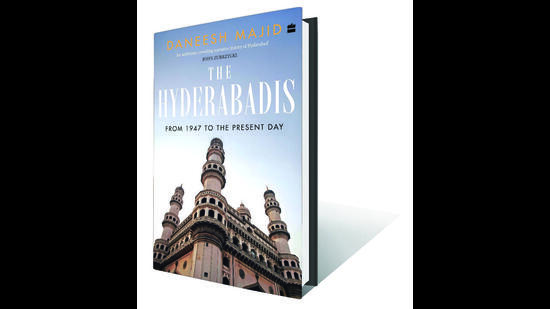HT Picks; New Reads
This week’s pick of interesting reads includes a book on an important former princely state’s past and future, a thrilling first-person account of the perils of being a maritime officer, and a volume on the stunning works of Indian artists patronised by employees of foreign trading companies in the 18th and early 19th centuries
A modern history of Hyderabad


From the annexation of the princely state of Hyderabad in September 1948 to the formation of Andhra Pradesh in 1956 and the eventual creation of Telangana in 2014 – these broad brushstrokes of Hyderabad’s history are well-documented. What has long been missing, however, is the perspective of the people, the different communities who lived through these upheavals – the communal violence of Independence and Partition, the push for a linguistic re-imagination of the state and its bifurcation, the long-drawn-out struggle for statehood – and those who were forced to adapt to a rapidly changing India.
For the first time, Daneesh Majid brings their stories to light. Drawing from generational interviews, oral histories, literature in Urdu and English and his own personal experiences, he drafts a modern history of Hyderabad. A work of this scale and size has never been attempted before and The Hyderabadis promises to open new doors to the former kingdom’s past and future.*
Terror on the high seas

On 11 April 2010, Pralav Dhyani, a freshly minted deck officer in training on a cargo merchant vessel, was contemplating the intense discipline life at sea would require from him, when armed pirates forcefully boarded the ship off the coast of Africa. As confusion ensued, one thing became clear to Pralav: the MV RAK Afrikana was being hijacked. It was the beginning of a nightmare that Pralav-then all of 21 has never been able to forget.
The crew was taken to an obscure location in Somalia, from where negotiations commenced with their ship’s company for their release. For 331 days, the small band of men, who had come together from different countries to earn a living for their families, stuck together through mock executions and mental torture, terror and betrayal, as a complex web of politics and piracy revealed itself to them. It would be 11 months before Pralav and his crew mates would be free again.
A compelling story of hardship and the power of human resilience, Hijacked is a thrilling first-person account of the perils of being a maritime officer and how treacherous life on the high seas can be.*
An exceptional phase of Indian art

The term ‘Company painting’ was coined some 70 years ago to describe works made by Indian artists working for European patrons in India – typically employees of the various foreign trading companies – in the late eighteenth and early nineteenth centuries. Early enthusiasts of the genre were few: most people thought it was too late and ‘decadent’ to be considered as good court art, and too early or ‘primitive’ to be considered as modern. Recent exhibitions and publications have raised awareness and appreciation of this exceptional phase of Indian art, and this sumptuously produced book and the accompanying exhibition of the works featured in it contributes to that purpose.
Company painting allowed Indian artists who had trained in courtly ateliers to first move outside the court to work for new patrons. The agendas of those patrons were not tied up with courtly or religious concerns. They were enthralled by India’s flora and fauna; by its architectural traditions; and by the costumes, customs and manners of its diverse peoples; and they looked to local artists to capture these details in images that would help them understand an environment that was new to them. Never mind that the patrons were foreigners, and their vision could be ill-informed. What strike the contemporary viewer is how the artists responded to their demands with skill and passion, creating entirely new templates of Indian art. Company painting, while reflecting India’s past, also shows us a moment of modernity. The show is on at the DAG Gallery at 22A Windsor Place, Janpath, New Delhi until 5th July 2025.*
*All copy from book flap






